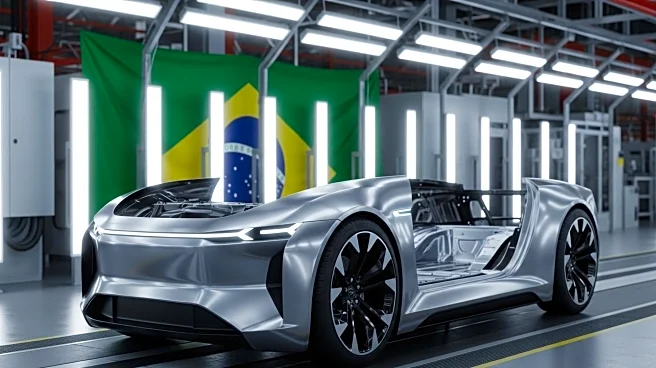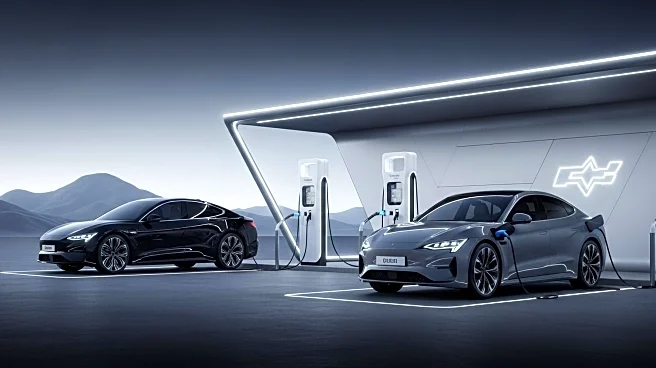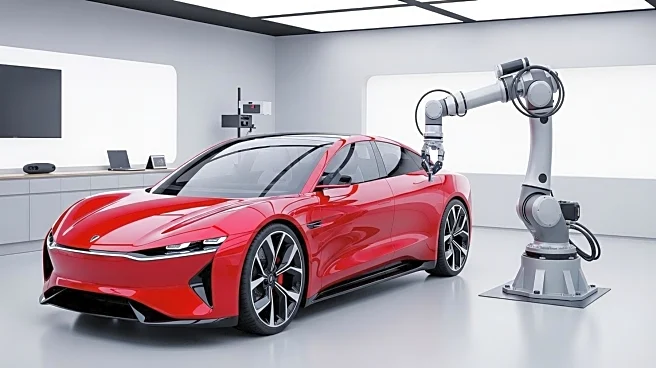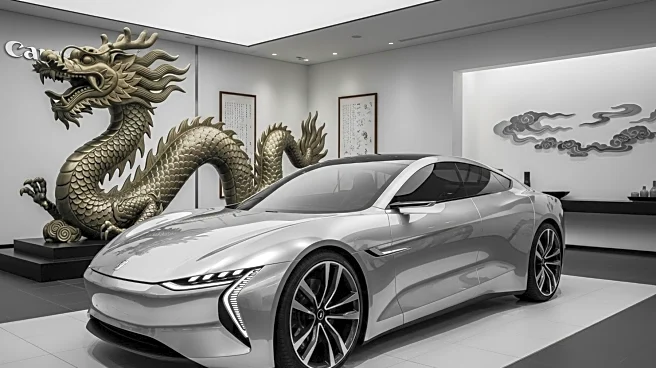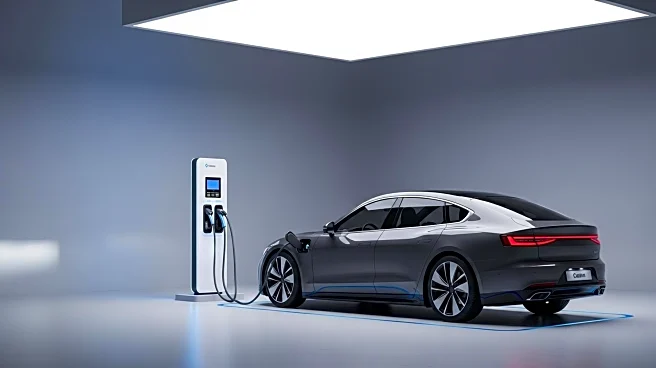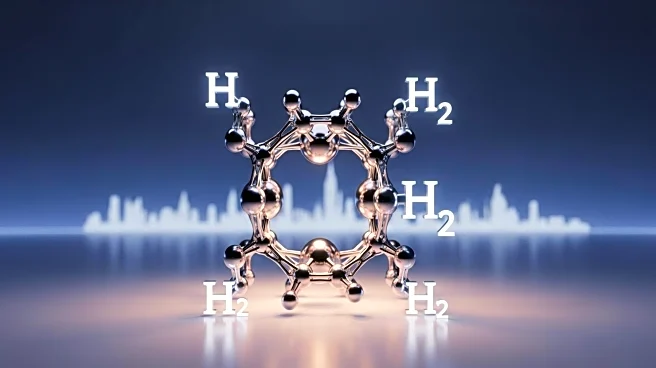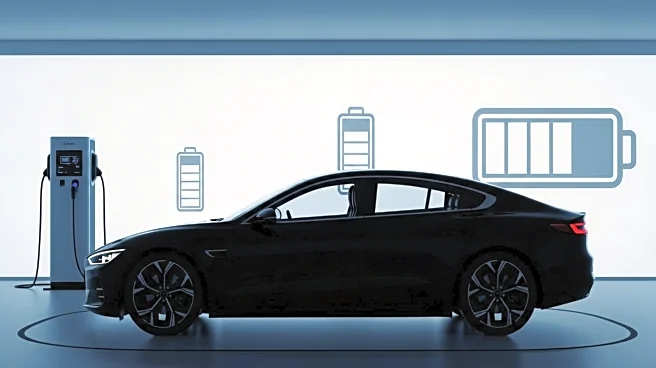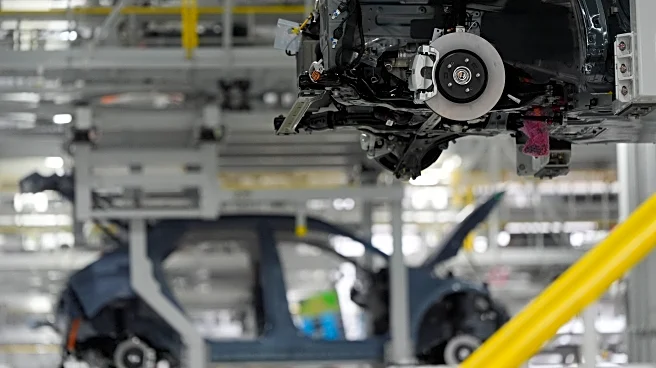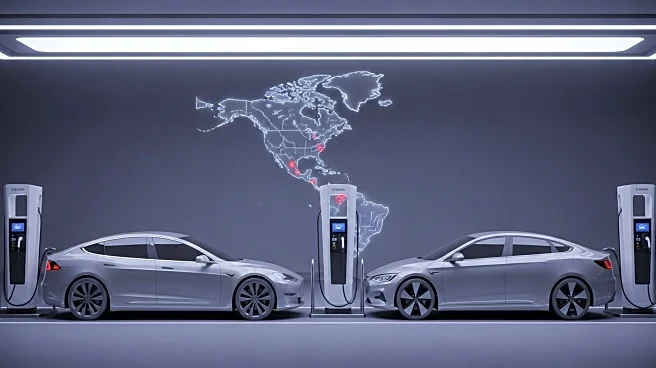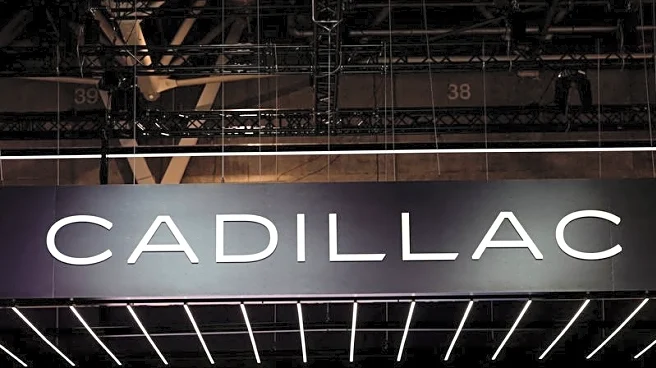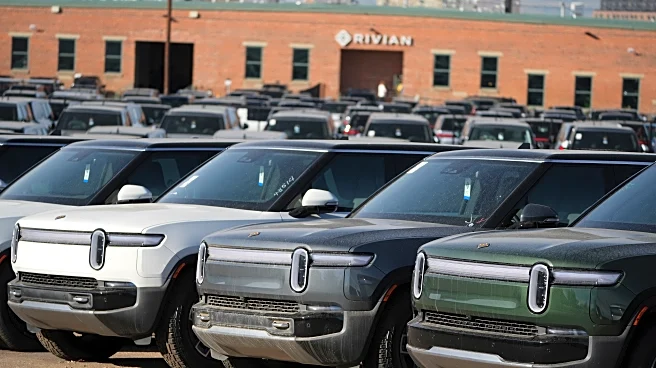What is the story about?
What's Happening?
General Motors (GM) is revising its electric vehicle (EV) strategy in North America due to changing market expectations. The company had initially set ambitious targets for electrification by 2030, with Cadillac leading the transition to an all-electric lineup. However, GM is now slowing its EV transition, influenced by weakened market outlooks and competitive pressures. The company is focusing on customer demand to guide its EV plans, rather than adhering strictly to previous targets. GM's collaboration with Hyundai Motor Company, announced in September 2024, aims to explore joint production of electric and hydrogen technologies, as well as combined sourcing of battery materials and steel.
Why It's Important?
GM's shift in strategy reflects broader challenges in the EV market, particularly in North America. The company's decision to slow its electrification plans could impact its competitiveness in the rapidly evolving automotive industry. This adjustment may affect stakeholders, including investors and consumers, who are increasingly focused on sustainable and innovative vehicle options. GM's collaboration with Hyundai could provide new opportunities for technological advancements and cost efficiencies, potentially benefiting both companies in the long term.
What's Next?
GM's future actions will likely involve further adjustments to its production and sales strategies, as it navigates the evolving EV landscape. The company may continue to refine its approach based on market demand and technological developments. Stakeholders will be watching closely to see how GM balances its traditional vehicle production with its electrification goals, and how its partnership with Hyundai influences its strategic direction.
Beyond the Headlines
The shift in GM's EV strategy highlights the complexities of transitioning to sustainable automotive solutions. It underscores the need for automakers to remain adaptable in response to market dynamics and regulatory changes. GM's approach may also influence other industry players, prompting them to reassess their own electrification plans and partnerships.
AI Generated Content
Do you find this article useful?


